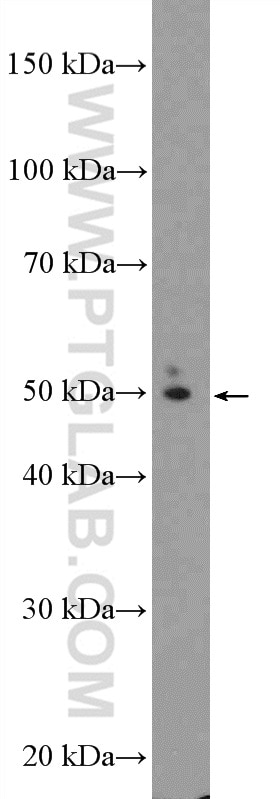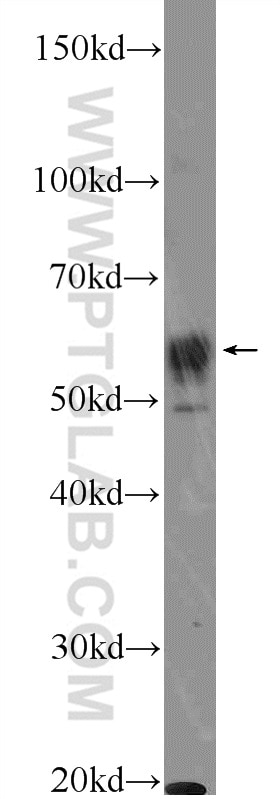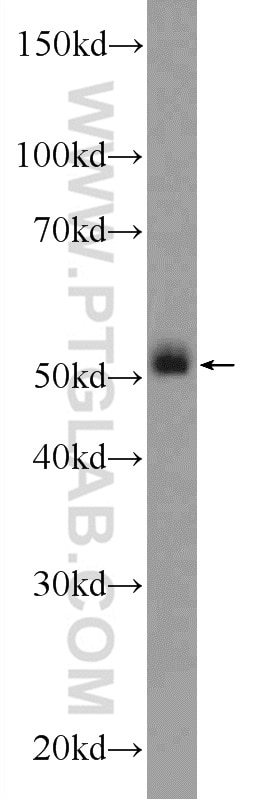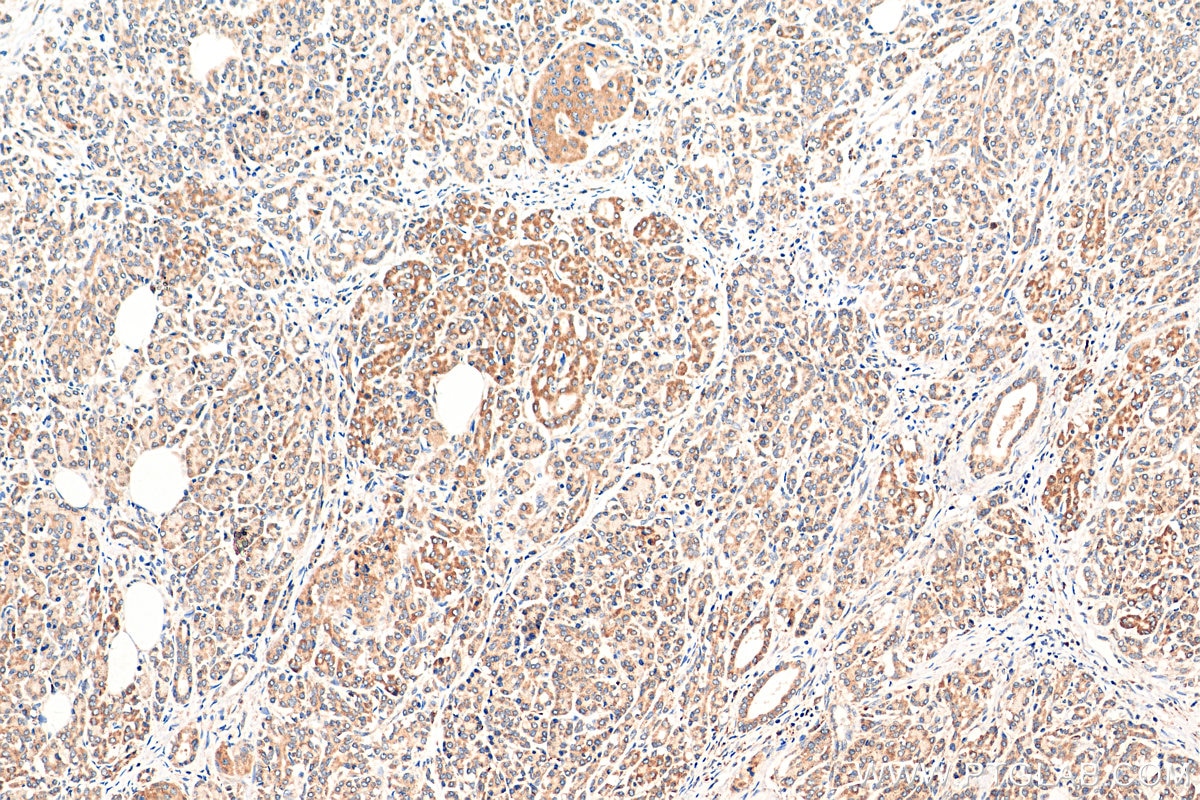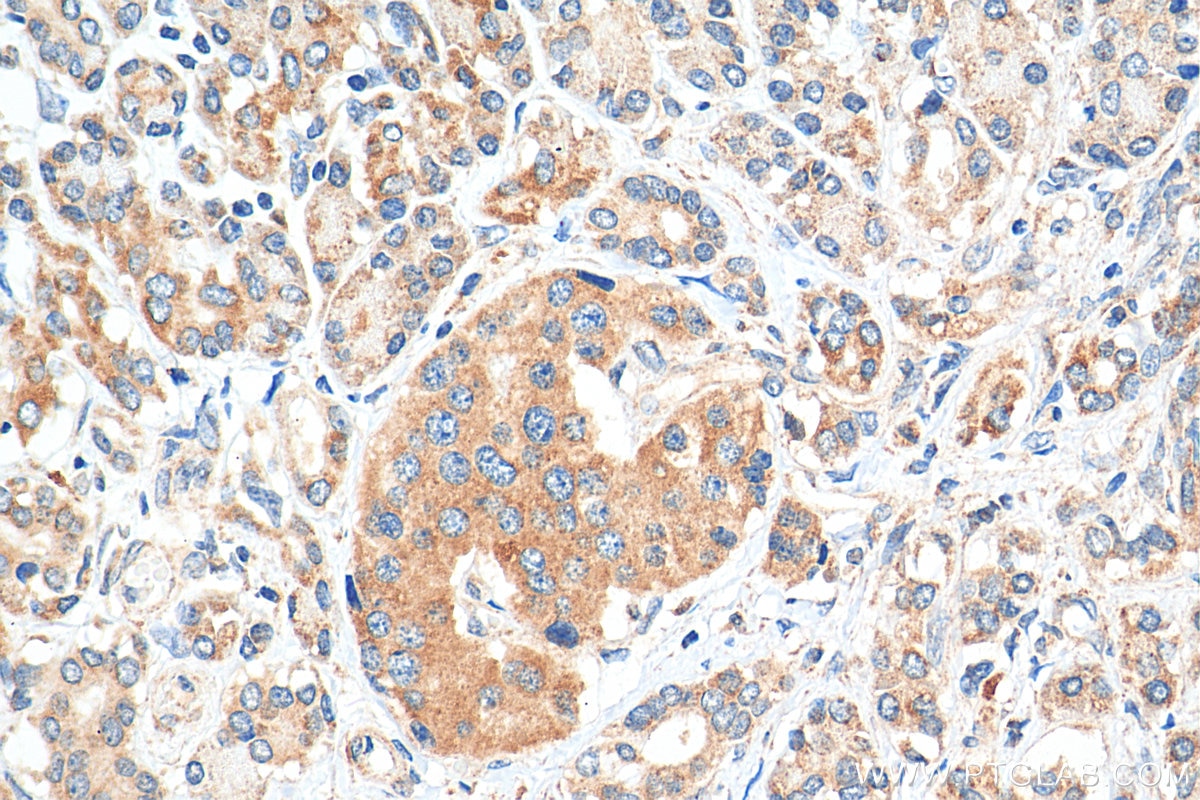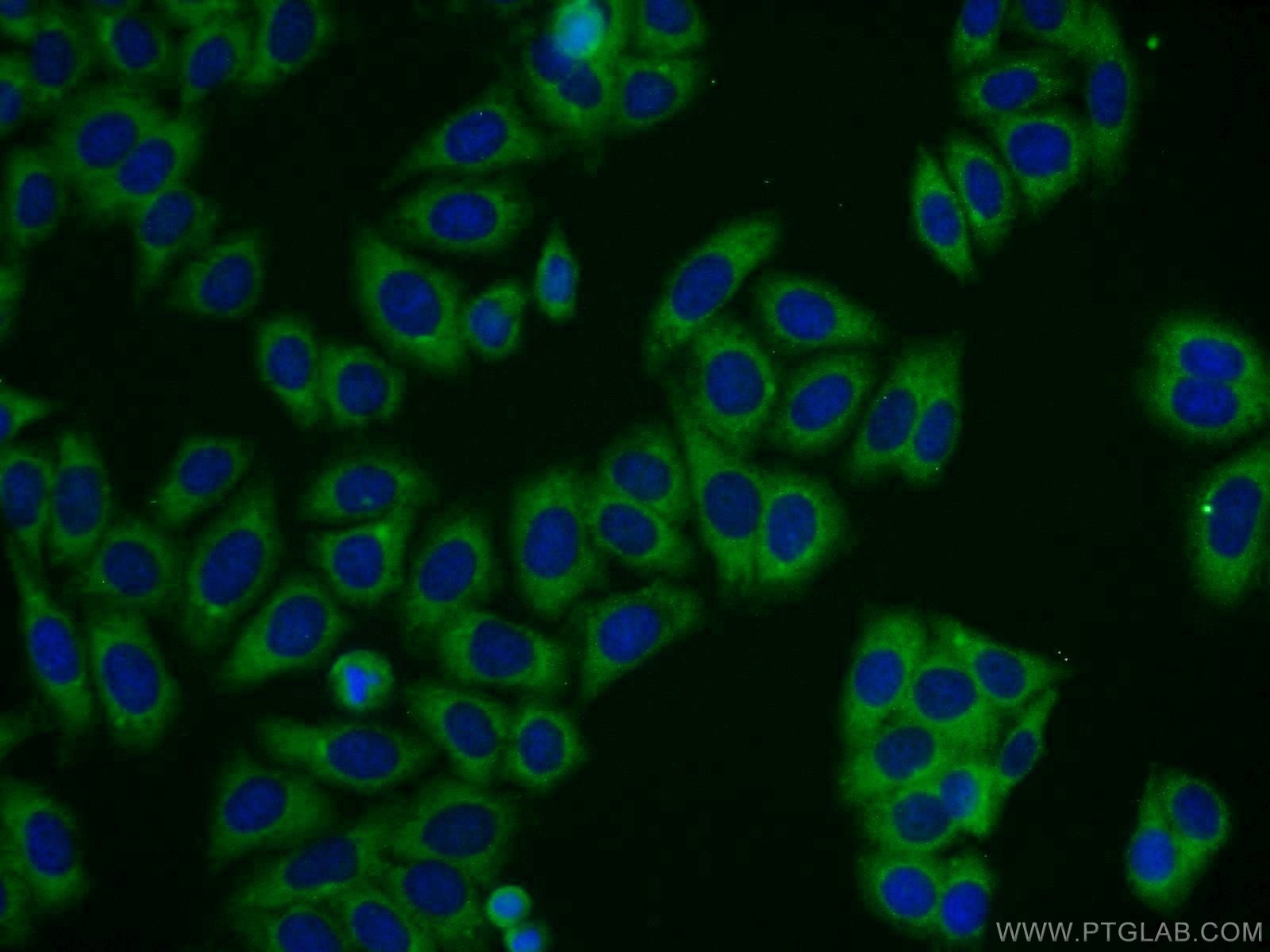TBC1D19 Polyclonal antibody
TBC1D19 Polyclonal Antibody for IF, IHC, WB, ELISA
Host / Isotype
Rabbit / IgG
Reactivity
human, mouse, rat
Applications
WB, IHC, IF, ELISA
Conjugate
Unconjugated
Cat no : 21085-1-AP
Synonyms
Validation Data Gallery
Tested Applications
| Positive WB detected in | mouse brain tissue, rat brain tissue |
| Positive IHC detected in | human pancreas cancer tissue Note: suggested antigen retrieval with TE buffer pH 9.0; (*) Alternatively, antigen retrieval may be performed with citrate buffer pH 6.0 |
| Positive IF detected in | HepG2 cells |
Recommended dilution
| Application | Dilution |
|---|---|
| Western Blot (WB) | WB : 1:500-1:2000 |
| Immunohistochemistry (IHC) | IHC : 1:50-1:500 |
| Immunofluorescence (IF) | IF : 1:20-1:200 |
| It is recommended that this reagent should be titrated in each testing system to obtain optimal results. | |
| Sample-dependent, Check data in validation data gallery. | |
Product Information
The immunogen of 21085-1-AP is TBC1D19 Fusion Protein expressed in E. coli.
| Tested Reactivity | human, mouse, rat |
| Host / Isotype | Rabbit / IgG |
| Class | Polyclonal |
| Type | Antibody |
| Immunogen | TBC1D19 fusion protein Ag15323 |
| Full Name | TBC1 domain family, member 19 |
| Calculated Molecular Weight | 526 aa, 60 kDa |
| Observed Molecular Weight | 55 kDa |
| GenBank Accession Number | BC031642 |
| Gene Symbol | TBC1D19 |
| Gene ID (NCBI) | 55296 |
| RRID | AB_2878809 |
| Conjugate | Unconjugated |
| Form | Liquid |
| Purification Method | Antigen affinity purification |
| Storage Buffer | PBS with 0.02% sodium azide and 50% glycerol pH 7.3. |
| Storage Conditions | Store at -20°C. Stable for one year after shipment. Aliquoting is unnecessary for -20oC storage. 20ul sizes contain 0.1% BSA. |
Background Information
The function of TBC1D19 remains largely unknown. TBC1D19 may act as a GTPase-activating protein for Rab family protein(s).
Protocols
| Product Specific Protocols | |
|---|---|
| WB protocol for TBC1D19 antibody 21085-1-AP | Download protocol |
| IHC protocol for TBC1D19 antibody 21085-1-AP | Download protocol |
| IF protocol for TBC1D19 antibody 21085-1-AP | Download protocol |
| Standard Protocols | |
|---|---|
| Click here to view our Standard Protocols |
